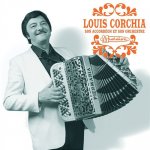Steven,Stephen pid=69147 dateline=1578418970 said:Because accordion tuition always starts with playing in the key of C ... (because historically in the 19th century music education was primarily a pianoforte based education, favorising the C scale layout as the basic layout).
I am relatively new to the list, so please correct me if I am wrong. I think that you started this particular thread with improved musicianship in mind. Something that you do regularly. I share that interest and appreciate your efforts.
As to the color and texture of buttons, I think the fret marking on guitars might offer some perspective.
If I remember correctly, you play classical guitar (as I do). Non-guitarists may know that classical guitars dont have fret markings on the fretboard or along the edge of the fretboard, but that other guitars usually do (frets 3, 5, 7, 10, 12, etc). These markings do not refer to keys or individual notes but to locations, aids to knowing where you are on the keyboard.
My accordina has different colored buttons (none are textured or indented), but since I cant play the accordina and look at the buttons at the same time, they are primarily decoration. They all could be the same color. However, regardless of the color of the buttons, I must somehow know the button of the first note of the start of a piece of music, the sections within it, and the starting points after long rests. Some method must be used to accomplish this. Once I have this starting point, I play as you have described.
I cant speak for others, but when they say they use textured or indented buttons, I think they are referring to them as aids to location along the keyboard, not as the marking of notes they will necessarily use in a particular piece of music.

